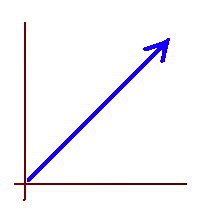An arithmetic and geometric approach to Algebra
A very common mistake test takers make when they have been out of school for a while is that they automatically try to expand the square of a sum as if it was the same as the plain sum of the squares of the individual terms. For example, sometimes some students, when presented with say, (x + 5)2, they wrongly expand it as x2 + 25, leaving out the middle term 10x.
They forget they have to use the foil method to multiply the given sum times itself. Since typographically the sum of the squares looks like something that could equal the square of the sum, they guess they can expand the square that way, as if it was a real math rule, and then they get the problem wrong.
I try to preemptively address the possibility of this mistake, because both sums of squares and squares of sums show up a lot in the math section of standardized tests. For a long time I have used a drawing, with two little squares and two congruent rectangles filling up a larger square, to show the geometric interpretation (in terms of area) for the algebraic formula (a + b)2 = a2 + 2ab + b2. I emphasize the middle term, 2ab, in this expansion, and I point to the corresponding two rectangles in the drawing.
The above approach is useful but many students forget the formula when it comes to actually applying it. Most do not realize it is a universal pattern where to plug any other expressions in.
So, lately I have been experimenting with a slightly different approach: I present two or three numerical examples first, before drawing the squares and rectangles. I ask the student to choose two numbers, and then I guide them through a sequence of calculations that allows them to actually compute and see the numerical difference between the square of the sum, and the sum of the squares. Then I ask them to multiply the original numbers, then to double this product. By asking all the questions in the right order, I have gotten comments from them like: “Wow!” or “How weird!” or “That is so funny!” or “This is very interesting!” or “Does it always work like that?” or “How can that be?” or “What is going on?” or “I’m sure there is a pattern here!” Then I draw the squares and rectangles with all the numbers in their proper places. So, creating the perception of a “mystery” with the numbers, and then explaining it away with the picture seems to work well. It makes sense for the students. They usually say: “Oh, right! Now I get it.”
Golden iteration
-
The expression converges to the golden ratio φ. Another way to say this is
that the sequence defined by x0 = 1 and for n > 0 converges to φ. This post
wi...
1 day ago





No comments:
Post a Comment